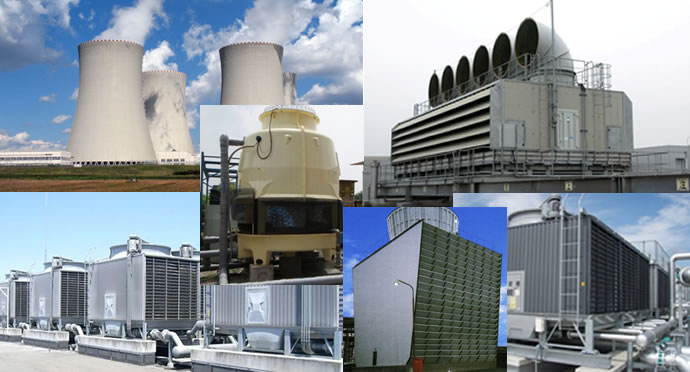Revolutionizing Cooling Towers: The Role of Nanobubbles in Buildup Treatment and Flow Improvement
COOLING TOWER
11/11/20244 min read


Understanding Cooling Tower Challenges
Cooling towers are indispensable components in numerous industrial processes, providing essential temperature regulation by expelling waste heat from various systems. However, these systems often face several challenges that can significantly impair their efficiency and operational longevity. One of the foremost issues is the formation of scale and deposits, which can occur when mineral concentrations in the circulating water exceed saturation levels. Common minerals such as calcium carbonate and silica are notorious for precipitating and forming hard scale deposits within the cooling tower's components.
Unchecked, these deposits can lead to significant operational inefficiencies. For example, scale accumulation can obstruct water flow through cooling tower screens and filters, causing a marked increase in pressure fluctuations. This obstruction compromises the cooling efficiency, resulting in elevated water temperatures that may jeopardize the industrial processes relying on consistent temperature control. Additionally, the consequent increase in pump workload due to restricted flow can drive up energy consumption, thereby escalating operational costs.
The maintenance of cooling towers also escalates when these deposits become entrenched. Operators often face increased costs to remove scale, which may involve chemical treatments, manual cleaning, or even the replacement of components affected by severe buildup. These measures not only demand financial resources but also disrupt routine operations, leading to potential downtimes. Furthermore, the buildup of biofilms often accompanies mineral deposits, further complicating the treatment processes and introducing the potential for microbial corrosion, which can degrade materials over time.
Ultimately, the issues presented by scale and deposits underscore the critical need for regular monitoring and maintenance in cooling tower operations. Innovative solutions are necessary to mitigate the problems posed by buildups, ensuring smoother operation and improved efficiency. Addressing these challenges will not only prolong the life cycle of cooling systems but also enhance overall operational performance.
What are Nanobubbles?
Nanobubbles are ultra-small gas bubbles that typically measure less than 200 nanometers in diameter. Unlike conventional bubbles, which can coalesce and rise to the surface quickly, nanobubbles exhibit a remarkable stability that allows them to remain suspended in liquids for extended periods. This unique characteristic arises from their size, shape, and the surface charge they possess, making them significantly different from larger gas bubbles. They are often stable in solution due to the high internal pressure and the interactions between the gas molecules and the liquid medium.
The formation of nanobubbles can be achieved through various methods, including cavitation, high shear mixing, or electrochemical techniques. These processes create a turbulent environment where gas is dispersed into the liquid, leading to the generation of tiny bubbles that resist merging. Their small size provides specific advantages, as nanobubbles have a higher surface area-to-volume ratio. This increased contact surface area enhances their interaction with surrounding substances, making them particularly effective in applications such as water treatment and cooling towers.
In the context of cooling towers, the properties of nanobubbles can significantly improve system performance. When introduced into the cooling water, nanobubbles interact with scale deposits. As they come in contact with the surface of these deposits, they help disrupt the bond between the scale material and the surfaces of the cooling system, ultimately aiding in buildup removal and improving water flow. The enhanced interactions provided by nanobubbles not only facilitate scale treatment but also contribute to better heat exchange efficiency, vital for optimal operational performance.
The Benefits of Using Nanobubbles in Cooling Towers
Implementing nanobubble technology in cooling towers offers numerous advantages that significantly enhance their operational efficiency and longevity. One of the primary benefits is the effective mitigation of scale buildup, which is a common issue in cooling systems. Nanobubbles, due to their extremely small size and high surface area, exhibit remarkable performance in reducing mineral precipitation. This characteristic enables them to effectively disrupt the processes that lead to scale formation, thus prolonging the intervals between maintenance and cleaning procedures.
Moreover, nanobubbles facilitate improved water flow within cooling towers. Their unique physical properties allow nanobubbles to remain suspended in water for extended periods, creating a stable environment that reduces turbulence and enhances heat exchange efficiency. Real-world applications have demonstrated that cooling systems utilizing nanobubbles can achieve up to a 30% increase in flow rates. This improvement not only leads to enhanced cooling performance but also contributes to lower energy consumption as pumps work less against increased friction and pressure losses.
In addition to physical improvements, the use of nanobubbles substantially diminishes the reliance on chemical treatments for water management. Traditional methods often involve the use of biocides and scale inhibitors, which can carry significant costs and potential environmental risks. In contrast, nanobubble technology promotes a more eco-friendly approach by minimizing chemical additives, consequently reducing both operational costs and ecological impacts. Case studies have revealed that facilities implementing nanobubble systems have experienced maintenance cost reductions by as much as 40% over time, providing compelling evidence for their economic viability.
These benefits collectively underscore the transformative potential of nanobubbling technology in optimizing cooling tower operations, driving efficiency, and ensuring sustainable practices in water management.
Implementation and Future Perspectives
The integration of nanobubble technology into existing cooling tower infrastructures presents both opportunities and challenges. One of the primary considerations in implementing such systems is the compatibility with current mechanisms. Cooling towers are essential for efficient industrial processes, and the introduction of nanobubble generators requires a comprehensive assessment of existing piping, pumps, and treatment systems. It is crucial to ensure that the nanobubble units can operate seamlessly alongside traditional methods to maximize effectiveness without causing any disruption.
In terms of cost, initial investments may be significant depending on the scale of the cooling tower and the complexity of the integration. However, the long-term benefits could outweigh these upfront expenses. By enhancing heat transfer efficiency and reducing chemical usage through advanced buildup treatment methods, operators may experience significant savings in maintenance and operational costs over time. Additionally, decreased water consumption and improved cooling efficiency can make these systems highly attractive from an economic standpoint.
Challenges in implementation may include the need for staff training to operate and maintain the new technology effectively. As nanobubble systems are relatively novel, ensuring personnel are familiar with their operation will be essential to success. Furthermore, regulatory considerations might arise, necessitating collaboration with stakeholders to align with environmental and safety standards, particularly in industries that are heavily monitored.
Looking ahead, the future of nanobubble technology seems promising not only for cooling towers but also for a range of industrial applications. Innovations in this field may lead to various adaptations and improvements, such as enhanced energy efficiency, reduced environmental impact, and the development of mobile nanobubble systems. As industries increasingly seek sustainable practices, the role of nanobubbles in promoting cleaner and more efficient technologies will undoubtedly expand, beckoning future research and development in this fascinating area.
Innovation By Research
Shenton Way, Singapore
© 2024. C2C Technology Singapore Pte Ltd All rights reserved.
Company
RELATED Products
INDUSTRY NEWS
